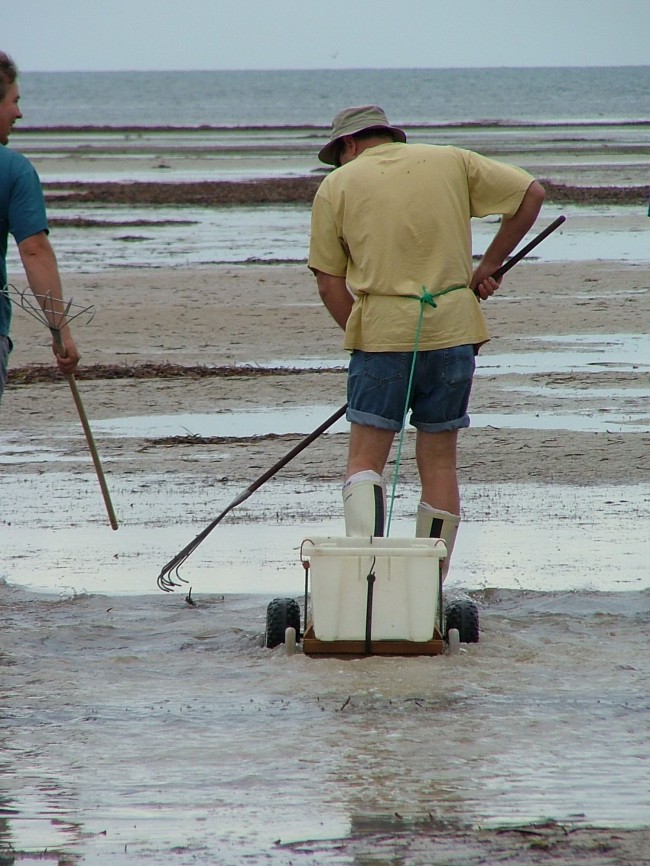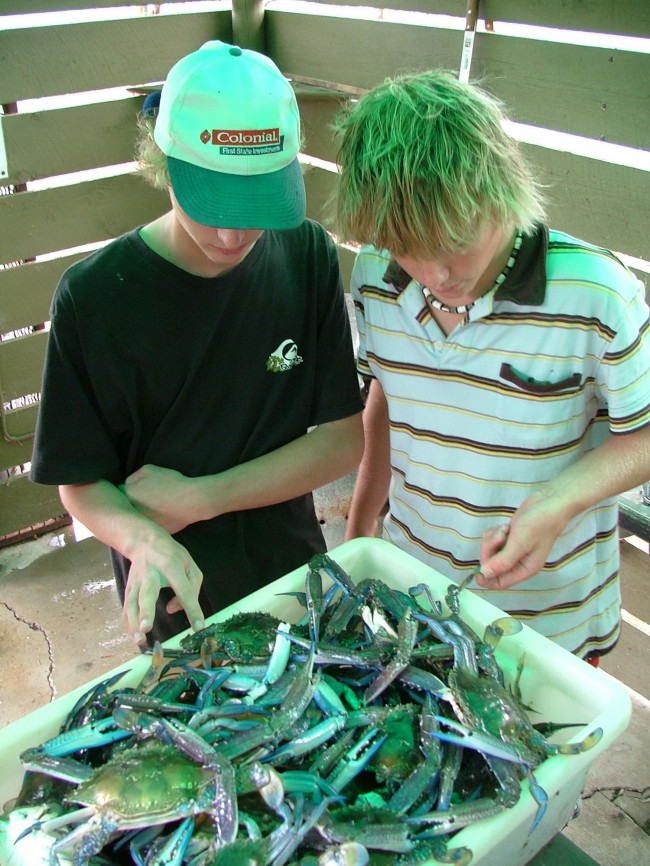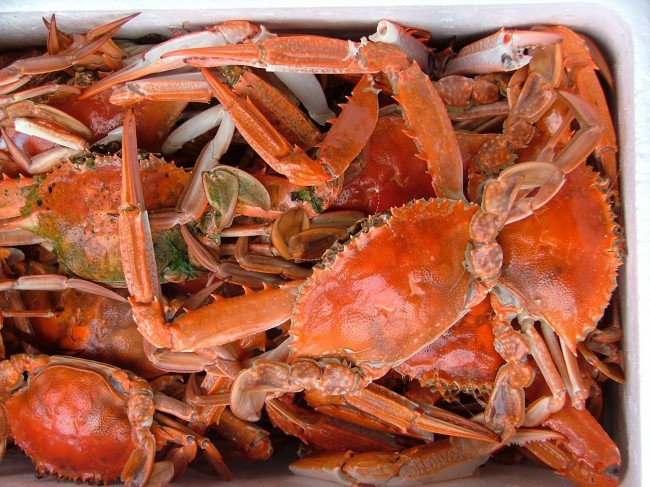If only I had learnt Latin at school. At least then I would have had an inkling of the task ahead as we trudged through mud to get to the sandy flats of a beach at Ardrossan in time for low tide.
Forewarned is forearmed, they say.
But how was I to know that the scientific name for blue swimmer crabs is Portunus pelagicus? Portunus from portare, meaning imposing bearing or to carry a ported weapon, and tunica meaning a Roman soldier’s close-fitting battle vest. Pelagicus is not so interesting, coming from the Greek word pelagos, meaning the sea.
But put the two together and you have an “imposing, armoured, weapon-wielding soldier from beneath the sea”.
I should have known.
One of South Australia’s small pleasures is crab raking, or “dabbing”, as the locals call it, a common pastime in the state’s gulf regions.
Blue swimmer crabs are found along much of Australia’s coastline, but catching them by dabbing is a seasonal sport for many who make their way to the tidal sand flats of South Australia’s St Vincent and Spencer gulfs.
Blue swimmer crabs (or “blueys”) are obviously not too smart. They gave up tropical islands millennia ago to come and live here. They are essentially a tropical species that has adapted to the cooler waters of southern Australia.
And don’t front the pub bar at Ardrossan and start asking the locals where to find a good crabbing beach. Most will go deaf, dumb and mute, even though English is spoken in most parts of Yorke Peninsula.
Ardrossanians are canny about their dabbing spots. But during crabbing season from September to April, there’s every chance of finding a good spot simply by turning left off the road to Pine Point and heading down a dirt road to the coast.
The beauty of this “sport” where waders battle to scoop ornery crabs out of the water with a pronged metal rake is that it costs little to participate, and it’s kind of fun. Well mostly.
When a big bluey is raked from its hiding place beneath the sand and is scuttling sideways towards you brandishing menacing upraised claws, it’s either you or the crab.
No one has ever died from a crab attack, but when you stare an angry bluey in the gills, you could be forgiven for thinking so.
The needle-sharp points on their long pincers can snap quite neatly around the tendon of your upper heel, or on a toe – enough to raise blood and more than a few yells of pained surprise.
And there’s little point in running from a charging crab. Chances are you’ll only disturb another one and then you’ll be on the back foot on two fronts.
It takes nerves of steel to be a dab hand at crab raking. It’s deceiving looking into the water. A crab’s body circumference might look like it’s the size of a saucer, but from tip to tip of their outstretched claws, a big bluey might be upwards of 40cm wide. That’s a lot of waving, snapping crustacean down there, right near your pink “little piggy” toes, out to do it’s very best to sever your brief friendship.
And they hide.
Concealed beneath the sandy patches between the seagrass beds, the hunt takes place at low tide. That’s when it’s easiest to see them, and of course, once disturbed, they can see you.
Don’t think you’re saved by the inertia of the water or because they can’t get up much speed with all those spindly legs scrabbling to gain traction on the sand. They can SWIM!
Why do you think they call them blue swimmer crabs?
When you see victorious dabbers strutting out of the water wearing battered, threadbare runners, they are not making a fashion statement. They have made contact with Portunus pelagicus.
Old shoes are a dabber’s key piece of battle gear, along with a plastic tub or old baby’s bath roped into a tyre inner tube, pulled along the top of the water a few metres behind the dabber by another rope connected to their waist.
The really hi-tech dabbers have fitted wheels to their crabbing tubs, creating small cross-over vehicles adaptable to both land and sea.
I think they need something armour-plated – after all, our enemy is equipped with live shells.
The tub is crucial to your safety. Every time a crab attacks, you scoop it up (if you’re lucky) and shake it into the tub – not all that easy when the bluey has a vice-like grip on the metal prongs.
Each person can only fight and capture 40 crabs a day – that’s the bag limit. And only those measuring 11cm or more from point to point across the carapace (the crab’s back shell) can be kept. Females have a wide flap on their underside, where the eggs are held, while the male’s flap is narrower. Females with eggs are protected and must be returned to the water.
Your key piece of equipment, the rake, can be picked up from a local hardware store for around $10 for one with a wooden handle. A deluxe model with an aluminium handle costs around $15. Nerves of steel cost extra.
Ardrossan, on the western shore of Gulf St Vincent, is an easy 90-minute drive from Adelaide, north around the top of the gulf and down the eastern side of Yorke Peninsula, passing through the sleepy seaside towns of Port Clinton and Price.
Apart from the fact that it’s an agricultural centre and a major peninsula port for the shipment of grain and dolomite, Ardrossan’s most distinguishing feature is the 25-metre high red clay cliffs on which it is built. On a summer morning, the cliffs glow ochre red as the sun rises over the gulf.
Within an hours’ drive of the popular Copper Triangle tourist towns of Moonta, Kadina and Wallaroo, Ardrossan is a favourite holiday destination for Adelaideans who fish in the gulf waters, dive beneath them or go dabbing for blueys.
The best part is, like the pre-colonial Fijians who were partial to a missionary or two, dabbers get to make a meal of their captives.
And the crabs cook much quicker than a clergyman.
After three or four minutes in a pot of boiling salty water, the blueys turn red and are ready to eat, accompanied by salt, vinegar, and a well-earned beer.
Photo Credits
All Photos By Vincent Ross – All Rights Reserved









Please Share Your Thoughts - Leave A Comment!